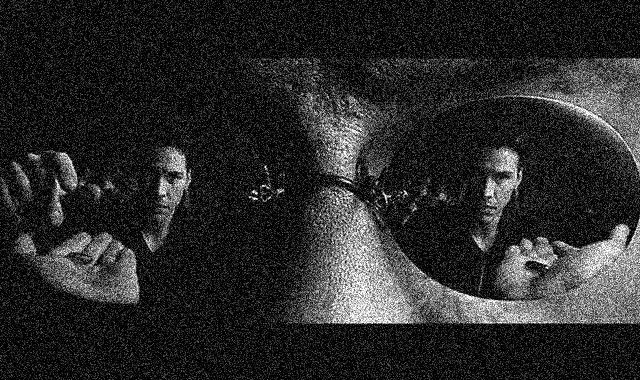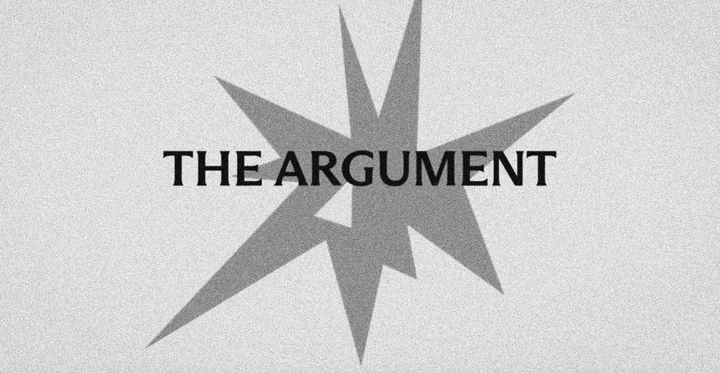There is No Red Pill
The red pill/blue pill metaphor has survived the last two decades, which should be strange: the choice it describes no longer exists.

The dying years of the twentieth century were the best time there’s ever been to see through the bullshit of society. There was a lot of bullshit out there. History was over; the world had settled into its final form: society as one giant mall, a consumer utopia built on limitless credit. “The peak of your civilization.” All the great battles had been won and all the big questions were now settled. The whole of history, cave paintings, stark pyramids in the desert, the bloody struggle for freedom on every continent—it had all just been one big conveyor belt, built solely to deposit us in front of the United Colors of Benetton.
Shouldn’t there be something else? Usually, the job of articulating a something else goes to the intellectuals, but the intellectuals were no longer interested. Any kind of depth metaphor had become deeply untrendy. Hermeneutics were out, we no longer needed a distinction between essence and appearance, and Marx and Freud were creatures of the nineteenth century, helpless before the future. Philosophy was happy to just skim across the brightly colored surface of capitalist society. What filled the gap was not thought, exactly, but a vague transcendental mood. If the only thing left to do is buy some cool stuff, then refusing to buy cool stuff becomes the only form of resistance left.
In politics, the fetishism of revolt: black blocs, culture jamming, an angry but incoherent anti-authoritarianism. No real ideological program, just a firm belief that more things ought to be on fire. And in culture, a kind of secular Gnosticism that briefly conquered the world. We were all against Yaldabaoth, the snake-demon with the head of a lion, the blind god who fashioned this false reality out of his own darkness. You know the list. The Truman Show, Office Space, Fight Club, eXistenZ, Dark City, Abre los ojos, and, of course, The Matrix. For a few years, Hollywood was constantly begging us to consider that our entire reality was one vast illusion, a dreamworld built by hidden archons to control you and lull you to sleep. They are hiding the truth. But what truth? In the end, it hardly mattered. The important thing wasn’t the hidden abode of production or the secrets of the unconscious, but a gesture: question everything, refuse to go along with the herd. Strange how everyone decided to abandon the herd at exactly the same time.
Of all these movies, The Matrix was the most perfect. Mostly because it had Yuen Woo-Ping choreographing the martial arts, and because it wasn’t too precious to hang the whole thing off a bog-standard Hero’s Journey—but also because it literalized every metaphor. The social machine was an actual machine, a giant robot bristling with electricity. The simulated reality was an actual simulation, delivered through metal ports in the back of your neck. The mindless slaves, living their meaningless little lives in cookie-cutter suburbs—your bourgeois parents—were actual slaves, secretly being harvested for their body heat. And the emptiness of the future was an actual emptiness: the apocalypse has already happened, the sun has been blotted out and the earth is a wasteland, we just haven’t noticed it.
Looking back, it’s obvious that the brilliance of the original Matrix was basically a grand accident, never to be repeated. Somehow, the Wachowskis channelled the spirit of the end of history into 136 minutes of leather capes and wire fu, but they didn’t really understand what they’d done. They thought they were delivering some important insights, instead of simply finding a new way to represent what everyone already believed. (It didn’t help that the film critics started circulating some very weird claims: that this was really a work of philosophy, that you could only get the movie by decoding its basically decorative Christian symbolism.) The two Matrix sequels replaced the seeing-through-the-bullshit angle with a lot of intense guff about fate and free will, delivered in phrases like “your life is the sum of a remainder of an unbalanced equation inherent to the programming of the Matrix.” Meaningless dogshit. But the world had already changed.
There’s a new Matrix sequel out, directed by one of the two Wachowski sisters, which catapults us right back to the scenario of the 1999 original. Keanu Reeves is back in his digital dreamworld; once again, he’s unaware that it’s not even real. Something about this feels wrong, and it is. Twenty years on, can you even tell this story? Would it still make any sense?
These days, the mantra of the good progressive types is not question everything, but in this house we believe. Believe the science, believe the experts, believe in our institutions, believe women. Liberals no longer think ordinary people should get to interrogate the big questions for themselves: your Google search is not the same as my medical degree. They don’t think corporate media is inherently propagandistic: it’s our last bulwark against online disinformation. They don’t even oppose the totalizing effect of mass culture: they just want culture-commodities to carry the right kind of didactic messaging. Along the way, an entire language has vanished, a whole stock of concepts has fallen out of use. Who, in 2022, bothers railing against conformity? Who wants to talk about alienation? Who is trying to shock us with their bold critiques of consumerism?
The idea that our entire reality is actually one vast mass delusion is still knocking around, but in a very different form. Tech billionaires occasionally remark that we’re living in some kind of computer simulation. In 2016, the Bank of America crunched the numbers and decided that there was a fifty-fifty chance our entire universe is really just made of software. We don’t yet know if this is taken into account in their ordinary financial decisions—if you’re getting denied for a loan because the bank thinks you might not even exist.
It’s fine to be sceptical about physical reality, but doing the same with social reality has become very fraught. It belongs to a different sort of person now: Covid deniers, climate deniers, people who think the election was stolen and half of Hollywood have been executed in secret cells. In 1999, the original Matrix closed with Rage Against The Machine’s “Wake Up”; in January 2021 their lyrics were chanted by trespassers at the US Capitol. RATM’s Tom Morello described the riot as an attempted “fascist coup,” and added that “the ugliest part about it is how they have co-opted the idea of standing against the Man.” It’s true: the whole Matrix complex has changed hands. Today, when someone talks about being redpilled, they are reliably on the right.
Annoyingly, the liberals aren’t entirely wrong. All their Trusting and Believing might be pathetic, heaped sacrifices for the same knowledge-producing structures that gave us a decade of austerity and the war in Iraq—but what else is there? When people think they’ve torn away the illusions of the world, they’re usually even deeper into the illusion than anyone else. Every so often I come across some dissident writer who wants us to know that the entire system of media messaging is one huge fake—but they’re somehow outside it. Are you sure? How did you manage to escape? Do you really think that’s air you’re breathing now?
This was Baudrillard’s critique of the Matrix films, which he saw as totally garbling his philosophy. It pretends that there’s an “uncut transparency” out there, a really real world which can be accessed once you clear away all the fakes and simulations. “The Matrix is surely the kind of film about the matrix that the matrix would have been able to produce.” The proper name for this attitude—refusing the whole system of signifiers, attempting to single-handedly establish an unmediated relation to the Real—is psychosis. The red pill is just a perfectly ordinary amphetamine. Take too much of it, and you’ll go insane.
Escaping the Matrix is very easy. Usually, it happens by accident. About a month ago, I noticed with unease that everyone I knew was suddenly talking about The Omicron Variant: an utterly stupid bundle of words, the title of a bad spy novel. They were all deeply worried about The Omicron Variant, friends were cancelling plans because of The Omicron Variant, the shape of my life was rapidly contracting because of this thing that had come out of nowhere like a ghost walking through walls. Sheep! The government and the news media trot out this phrase, and everyone starts mindlessly repeating it, as if it somehow exists…For a moment it didn’t occur to me that the system of digital media could still occasionally refer to something other than itself. That there really was a new variant of the Covid virus, even if we didn’t yet know how dangerous it might be. That things do, in fact, happen in the world.
Marshall McLuhan remarks that for anyone who’s internalized the standards of an old medium, everything in new media feels unreal. Pseudo-events, pseudo-activity, pseudo-reality. A closed world, utterly detached from the real one. This is not new. For Plato, who was still a creature of the oral world, whose thought still existed in spoken dialogues, writing was the stuff of a Matrix-like simulation. The written word is a kind of artificial memory, which “will produce forgetfulness in the minds of those who learn to use it… Their trust in writing, produced by external characters which are no part of themselves, will discourage the use of their own memory within them.” It gives readers “the appearance of wisdom, not true wisdom, for they will read many things without instruction and will therefore seem to know many things, when they are for the most part ignorant.”
By 1999, nobody thought that getting all your knowledge from books actually makes you stupider. But cinematic culture was suddenly very afraid of emerging networked digital media—and just as the guard changed, just before film was digested by the internet, there was a brief explosion in movies about the vertigo of being trapped in an unreal computerized world. For a moment, the fakeness factories of Hollywood took it upon themselves to defend reality. But as McLuhan reminds us, “all media exist to invest our lives with artificial perception.” For media theorists, we entered the Matrix as soon as we started slathering pigment on cave walls. We’ve been in the machine-simulacrum ever since we first prodded something with a stick.
Fine. But there are some things that really have changed with the arrival of digital media. In The Matrix, the blue pill keeps you in the computer simulation and the conformist mesh of society; the red pill tears you away from both. The red pill/blue pill metaphor has survived the last two decades, which should be strange: the choice it describes no longer exists. There’s almost nobody who still thinks that ‘society’ is a bad thing; it’s the name for what we’ve lost, the convivial world we’ve replaced with, well, a computer simulation.
In South Korea, it’s now official government policy to strip away all forms of human interaction and make everything ‘untact’—an Englishoid neologism, the opposite of ‘contact,’ to describe the frictionless and the distanced. Robot baristas; self-service kiosks; government services through the metaverse. (The English-speaking world doesn’t have a name for this, but it’s happening here too—all those Amazon stores where you can just walk out with your groceries, so convenient, away from the stench of human beings.) Untactness is meant to reduce the burden of emotional labor on service workers; it’s a strike against the culture of gapjil, the routine petty tyranny that permeates Korean consumer culture. A kind of freedom, absconding from the indignity of social life. You can be whoever you want, as long as it’s alone. Resisting the pressures of society has become one of the projects of the state. And at the center of the government’s new untact empire is a 30 billion won remote digital platform to treat depression. Is this the red pill or the blue pill? The map can’t help us. The territory has changed.
To be fair, Matrix: Resurrection does try to deal with some of these shifts. In the original films, the Matrix was an anonymous green-tinted city that didn’t look like anywhere in particular; this time we’re in a very clearly identifiable San Francisco. Previously, the Architect of the Matrix was a fussy little man in a three-piece suit; now he’s a therapist, gently calming you with a few pleasant banalities. Agent Smith is a chummy millennial CEO. But this raises a difficult question. When power looks like Hugo Weaving in a suit and tie, staring at you through his sunglasses and calling your Mister Anderson, it’s possible to make the case that you can resist power by wearing weird clothes and going to grimy industrial raves. But what if power is someone in a t-shirt and blazer, someone who’s been to all the industrial raves, and who calls you Tom? How do you resist it then?
There is an answer, but Lana Wachowski doesn’t want to go there. Keep the guns, but get rid of all the dusters and shades. Neo bulging fatly over the elasticated waistband of his camo outfit; Trinity with a perm. Morpheus drapes himself in an American flag stamped with the Punisher logo, and all of them chatter a constant stream of drivel as they force their way into the US Capitol. 5G demons, adrenochrome rituals, the great replacement, Satan in our schools.
Obviously this kind of thing is impossible. But since the whole ideological structure that gave us The Matrix is now off-limits, what we get instead is a creature without bones, a limp sack of jelly. The gimmick is that this time, Neo has been told that he’s a programmer who designed a series of culture-defining video games called The Matrix—clearly Wachowski has digested Baudrillard’s little jab at her earlier work—and now, they want him to make a fourth. (Why? It’s never explained.) Cue a long musical sequence in which various smarmy caricatures try to explain what The Matrix is really about, and what they want to go in the next one. “Obviously The Matrix is about trans politics.” “It’s a metaphor of capitalist exploitation.” “This can not be another reboot, retread, regurgitate…” “Why not? Reboots sell.”
Reboots sell. Other than that, the film can’t really come up with any good reason for its own existence. Characters from the original trilogy appear for seemingly no reason, say a few lines, strike a few kung-fu poses, and vanish again. More than that: entire sequences are either re-enacted with some slightly more obtrusive CGI, or literally just played again. Remember this? Remember this bit? At one point, the original red-pill-blue-pill scene is projected onto the screen of an abandoned cinema while our characters simultaneously re-enact it on the proscenium. “No one can be told what the Matrix is, blah blah blah.” A strange dreamlike quality throughout. This story has no real stakes, because it’s not even a story; it’s a two-and-a-half-hour clip show.
In a way, The Matrix is once again channelling the spirit of the age. This is what culture looks like now. It’s even become tedious and repetitive to point it out—to notice that in the new Spiderman film, the entire plot is just a vague pretext for showing us all the characters from the old Spiderman films; that the new Star Wars films are fanfic recombinations of the old Star Wars films; that everything is just repeating itself now, a planetary déjà vu, a Matrix that’s made of nothing but the glitch. But even in its shoddiness, it reveals something. You know that this is a pointless cash-grab reboot, and the film knows this about itself. At last, everything is perfectly clear. If the first Matrix was about the nightmare of a world that deceives you, that’s covering up some hidden, evil, external purpose, then the latest is the symptom of the world we actually live in: one that has no purpose at all, and doesn’t even bother to lie.
■
Sam Kriss is a writer and dilettante surviving in London.



